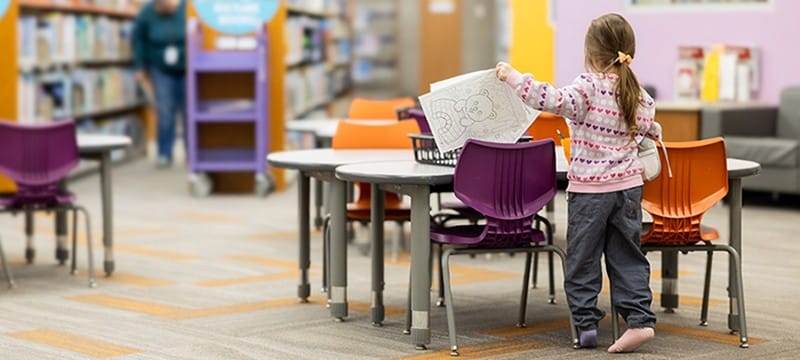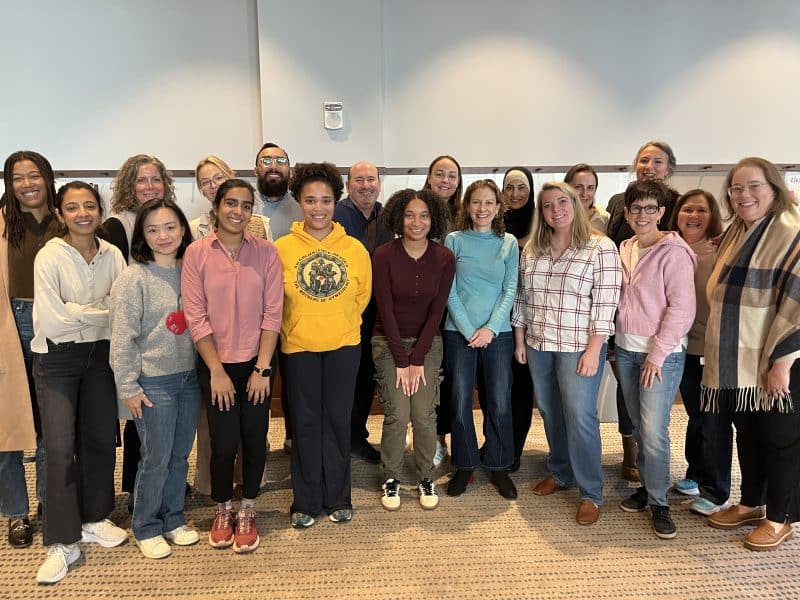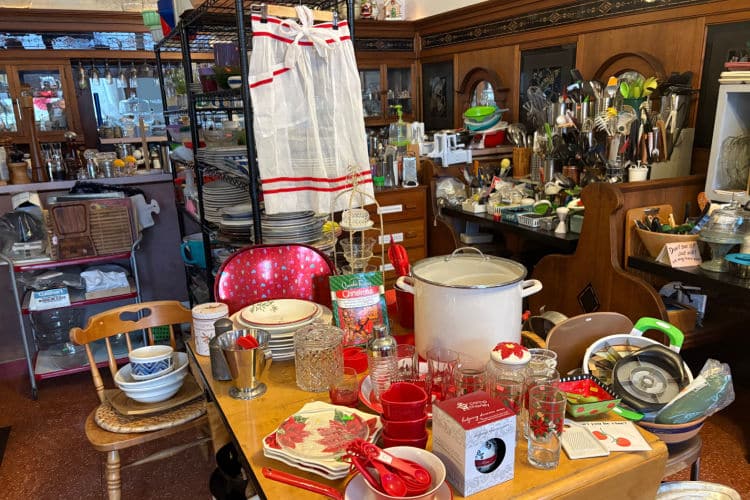City of Solidarity: Urban places can be models of social harmony in a divided world
With a diversity of cultures, places, and experiences – cities show how we can thrive in a complicated world.
Cities are engines of our local and national economies, and centers of creativity, culture, and entertainment. But they are under more pressure than ever. This is the latest in a monthly series, The Case for Cities, that will look at how Cincinnati and similar cities can grow by becoming places of choice, as well as models of social justice.
It’s Saturday night at a Walnut Hills jazz club, where Cincinnati’s chanteuse of jazz, Mandy Gaines, is holding forth, leading a trio through standards from Ella Fitzgerald, Billie Holiday, and Tony Bennett. It’s standing-room only at Caffe Vivace, and the crowd of 60 or so is evenly divided among Black and White patrons, with a few biracial couples in the mix, all gathered with an interest in America’s classical music, delivered with verve in a dimly lit bar.
Sunday afternoon at a concrete skating rink on Cincinnati’s downtown riverfront, and a couple dozen people are trying to keep their legs under them while perambulating on roller skates. A DJ is blasting T.I.’s “Bring Em Out.” The outdoor rink at the east end of Sawyer Point is alive with those willing to risk skinned knees and elbows in pursuit of a simple pleasure. They are young, not-so-young, men, women, Black, White, gay, straight.
Two unrelated events from a June weekend in Cincinnati. On the surface, just pleasant diversions. But could they point the way to a happier future?
It’s become a platitude to say that we live in a divided nation. Is it worse than it was in 1862, or 1929, or 1968? Impossible to say, but the evidence is all around: mass shootings, book bannings, road rage, COVID denial, deceitful politics, conspiracy theories, hate groups, even murmurs of civil war.
Cities are often disparaged as being places that foment division: they’re crime-ridden, crowded, full of minorities, and besides that, there’s no place to park. But can cities, with their diversity of cultures, places, experiences – some as simple as a jazz club or a roller rink — serve as models of social cohesion in this divided world? Could they be the places where we see how we can thrive in a complicated, noisy, hurly burly world?
For the past 18 months, Soapbox Cincinnati has published The Case for Cities series, exploring the notion that cities, with all their messiness, noise, and variety, can hold the keys to a more sustainable, equitable and healthier nation. Cincinnati and other cities have experienced something of an urban renaissance in recent years, as investment and population have begun to return to downtowns and surrounding neighborhoods. Could this urban awakening also lead to a better spirit of harmony, fellowship, and solidarity?
We asked a variety of community leaders, including the Case for Cities editorial advisory group, to weigh in on how cities can be models of solidarity in a world where forces tend to divide us, and if possible, to offer examples where that’s happening.
“I’ve always thought that social cohesion really only happens when we actually like folks who are different from ourselves,” says Terry Grundy, a dedicated urbanist, retired United Way executive, and adjunct professor in the University of Cincinnati School of Planning. “If we’re willing to take the step of meeting and spending time with people from different local cultures, we get so much from those personal encounters.”
Hence, Grundy’s recommendation to spend time at the jazz club, “where Black folks and White folks, old folks and young folks, richer folks and poorer folks all come together to enjoy the pleasures of jazz,” he says.
Through history, cities have always been places where cultures, races, backgrounds have coalesced to work, play, and live. It isn’t always pretty, but we thrive when we can collaborate, cooperate, and compete fairly shoulder to shoulder with people from all walks.
“A step toward cities achieving solidarity would be to provide spaces where people can come together to embrace and learn from different cultures and each other,” says Seth Walsh, the newest Cincinnati City Council member and a longtime urban neighborhood advocate. “Ideally, these spaces would provide a sense of belonging and allow people to be seen and heard by other members of the community.
Findlay Market, the public market situated in the heart of Northern Over-the-Rhine, is one of the those places, he says. “It is such a unique and diverse market where vendors from all backgrounds come together to educate people about their culture and background,” Walsh says. “It also provides a sense of belonging to people who might not be widely represented in Cincinnati.”

READ MORE: The Well-Fed City: How an urban market revitalized a neighborhood
Cities have problems, but they also possess the creativity, diversity, and history to solve them.
Community causes can unite people through a shared sense of purpose, suggests Jill Miller, CEO of bi3, Bethesda Inc.’s grantmaking initiative. “You have to identify that one thing that people are willing to work together to resolve, regardless of different beliefs and political opinions,” she says.
One example in Cincinnati that she cited is the effort to reduce what had been a high rate of infant deaths. Ten years ago, Cincinnati and Hamilton County had one of the highest infant mortality rates in the country. A coalition came together that included private hospitals and health systems, public health departments, funders, physicians, and foundations to create a sustained and ongoing effort to educate and help new mothers. The result was a dramatic decrease in the infant death rate.
“I believe most people want to be a part of something bigger than themselves and build a better tomorrow for our children,” Miller says. “We must work together as if lives depend on it,” she says. “Because they do.”
READ MORE: The Healthy City: A collaborative effort saves babies’ lives
Working together to reach shared goals is what John Pepper, retired chairman and CEO of Procter & Gamble, also noted. Pepper, whose many post-P&G projects include advocating for universal preschool education, says, “I believe a key is to have diverse community organizations, committed to diverse vital community goals working in alliance with each other and the business community.” He cited Greater Cincinnati Foundation, Cincinnati USA Regional Chamber, United Way, and the Urban League of Southwestern Ohio as being among those groups.
For Chamber CEO Brendon Cull, the question brought to mind a moment during the 2019 version of Blink, the art, light and music event spread throughout downtown, Over-the-Rhine and Northern Kentucky. He was part of a crowd admiring a light show on the face of the Contemporary Arts Center, and the moment became a memory.
“It was a shared experience,” he says, “and now that I think about it, a shared experience of appreciation, connection, inspiration, and yes, harmony.” Blink brought more than a million visits to Cincinnati’s urban core in each of its three iterations.
“Those moments happen in great cities,” Cull says. “Sometimes by chance, and sometimes by design. Great cities are places where fortunate collisions occur, sparking new connections and ideas, and yes, social harmony.”

New connections can lead to conversations and dialogue that can be eye opening, especially when it comes to the issue of race. That’s what Dr. David Childs, pastor of First Antioch Ministries in Walnut Hills thought of. “Cincinnati and other cities can become models of social harmony in a divisive world by having open and honest conversations about race in safe spaces,” he says.
In a city that is roughly half Black and half White, the opportunities are there to make meaningful connections. That exchange of ideas should be based on listening and understanding, he says. “The dialogue should be a shared dialogue of mutual respect between BIPOC communities and members of the White community,” he says. “When mutual respect and equal listening takes place, challenges that are unique to minority communities can be heard and recognized.”
First Antioch, a predominantly Black congregation, has opened up a series of conversations with members of Mission Cincinnati, a predominantly White church that evolved out of the Anglican tradition. “The aim is to break down some of the long-held prejudices, stereotypes and barriers between the two groups, and also right some of the historical wrongs perpetrated against communities of color,” Childs says.
Similar conversations have also been going on in Cincinnati’s largest neighborhood, Westwood, through a project called One Westwood. Pastors from Black and White churches, educators, nonprofit leaders, and engaged residents confronted difficult topics with the goal of sharing their learnings among their families, coworkers, friends, and networks. The group created a formal document, the One Westwood Covenant, stating the group’s intentions. It says in part, “One Westwood invites all residents to work together to end racism by listening to voices of the disenfranchised, committing to meaningful action, and holding each other accountable for change.”
READ MORE: Welcome to Westwood, where residents are changing attitudes one conversation at a time
That kind of mission statement can also be created by individuals and families, suggests Allen Woods, founder of Mortar, an accelerator for minority entrepreneurs. “In the same way that these become guiding principles for organizations, they can provide a north star for a household that wants to have a deeper impact in the communities they love,” he says. “Imagine having ‘Be a Great Neighbor to Everyone’ listed as a household core value, and consider how it might exhibit itself in your choices of volunteerism, financial contributions to local nonprofits, and in the ways you interact with your neighbors and community members. That alone could be a great start to actualizing solidarity.”
Others have found connection in groups that share an interest in movement and exercise. Danilo Palazzo, the director of the UC School of Planning, has found it in running groups. “The groups I have participated in were diverse and created opportunities for people of different social groups and ethnicities to join a common cause: run together,” he says. More recently, he has turned to bicycling, and found the Major Taylor Cycling Club of Cincinnati, named after a pioneering Black athlete of the late 19th and early 20th century. The club’s riders are predominantly Black, Palazzo says.
At the concrete roller rink at Sawyer Point, in an almost hidden corner of that downtown riverfront park, Morgan Rigaud organized skating classes and events, with an emphasis on including all. Skate Downtown Cincy, working with the city parks office, has brought new life to the rink, and a larger purpose.
“The rink is a sacred space that offers much, much more than skating,” she says. “It is a place where differences aren’t set aside but celebrated.”
The rink is open to the public, free of charge and accessible by car, bus, bike, or foot. It’s open to the air, and anyone can stop by to just watch. “The positive vibes and the music attract attention from passersby, drawing more in to skate or sometimes just to watch and listen,” Rigaud says. “It may seem like it’s a place just for skaters, but one visit will tell you that there’s a little something for everyone.”
There are few ground rules — be welcoming, be safe, be fun, and the vibe has an impact on those who visit, she says. “What was once about skating, is now about much more.”
Watching a few dozen skaters roll on a warm Sunday afternoon in a park next to the Ohio, music thrumming, it’s possible to think that maybe we’re not so divided after all.
You can read earlier articles in The Case for Cities series here.
You can view and listen to The Case for Cities conversation series here.
The Case for Cities: Cities of Choice are Cities of Justice series is a partnership between UC School of Planning and Soapbox Cincinnati, made possible with support from The Carol Ann and Ralph V. Haile, Jr. Foundation.

















